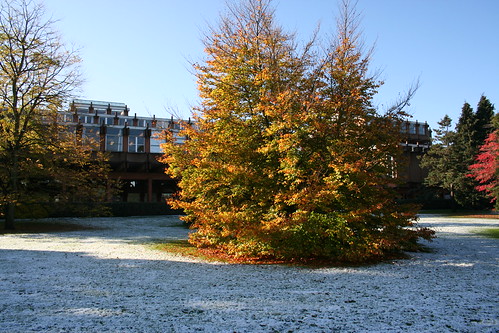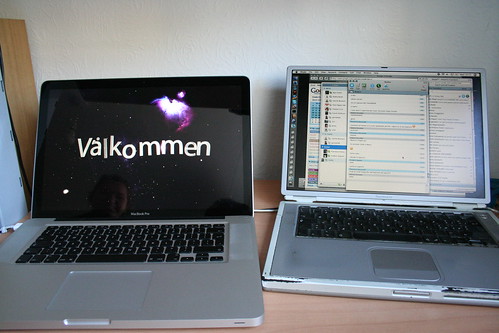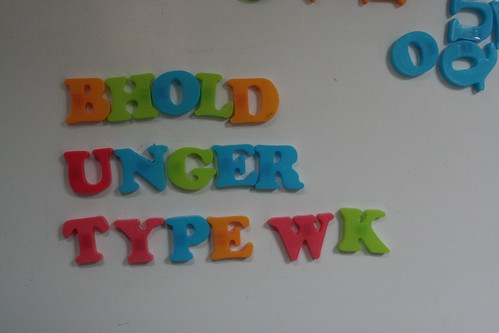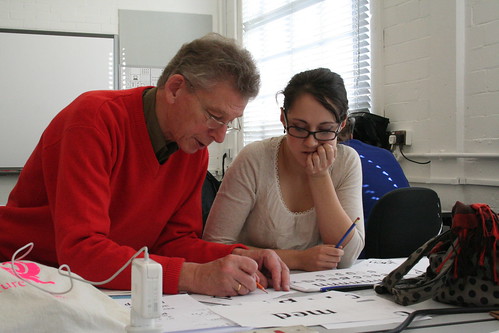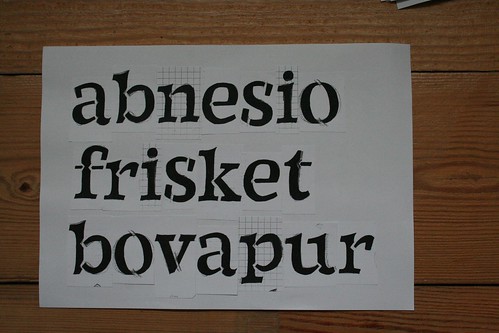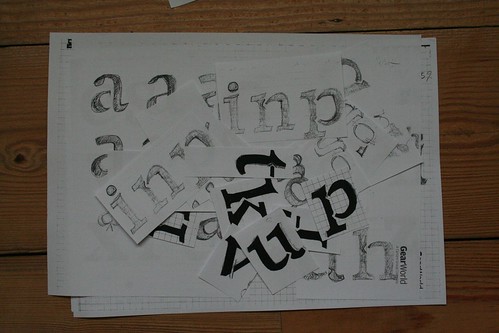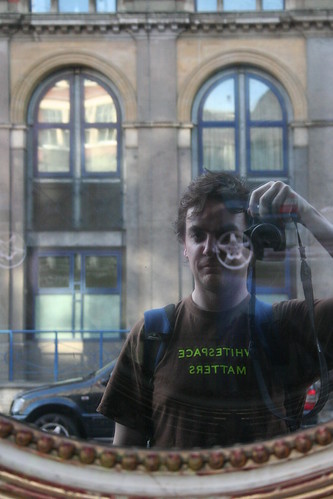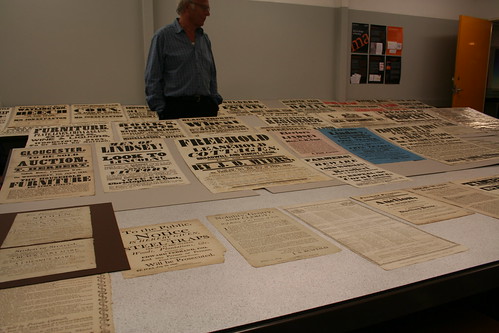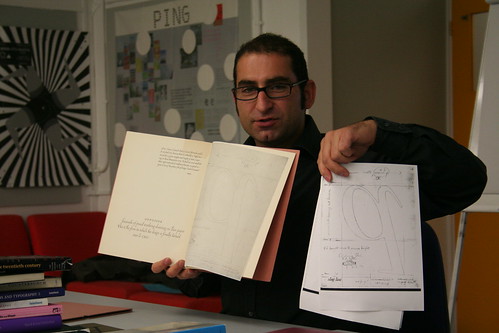Arabic Workshop
This week we had the Arabic workshop with Fiona Ross. We started on tuesday with an introduction to the script and especially Fiona’s experience in managing the design and production of Arabic typefaces for Linotype, through the case history of the re-development of Yakout by Tim Holloway, and the several steps of revision they went through. We also started drawing right away, to get a feel for the shapes and get acquainted with the Arabic script. The first day ended with some of us going to see the La graine et le mulet, a French movie about some arab expatriates in France.
The day also the weirdest in Reading so far, weather-wise: I went to the department in the morning without my jacket because there was a wonderful sunny sky and it was quite warm, then it started to rain (cats and dogs!) in the afternoon. The high point was reached when coming out from the movie: it was snowing!
The second day of the workshop was spent mostly drawing and sketching, with a lecture by Yannis Haralambous in the afternoon on the nuances of Unicode, OpenType, how typefaces actually work from a technical point of view, what are the problems involved in developing typefaces for complex scripts like Arabic, and how computers deal with them, TeX, and other geeky things. It was very intense and very challenging to follow Yannis’ super-sharp mind as he was explaining these concepts – which I admit I though I had a much better understanding of that it turned out to be the case.
Today we mostly kept on sketching and looked with Fiona at other issues related to Arabic typeface development, starting from calligraphic/lettering sketches and then going to the computer. We also did a class evaluation of several Linotype typefaces together, to see how our understanding of Arabic shapes was developing. The workshop ended with Fiona showing us some of the materials in the department collection and giving some feedback on our sketches.
All in all it’s been a great ride. While I can’t claim to know very much about the Arabic script, I certainly learned a lot this week: I now know some of the pitfalls and major problems in developing an Arabic typeface, and can identify and reproduce some of the glyphs needed.
By the way: many thanks to Deema, our classmate from Saudi Arabia. All the time I was sketching and I couldn’t figure out for the life of me what I was writing of it was even readable, so I used her eye to help me during these three days. Thanks!

